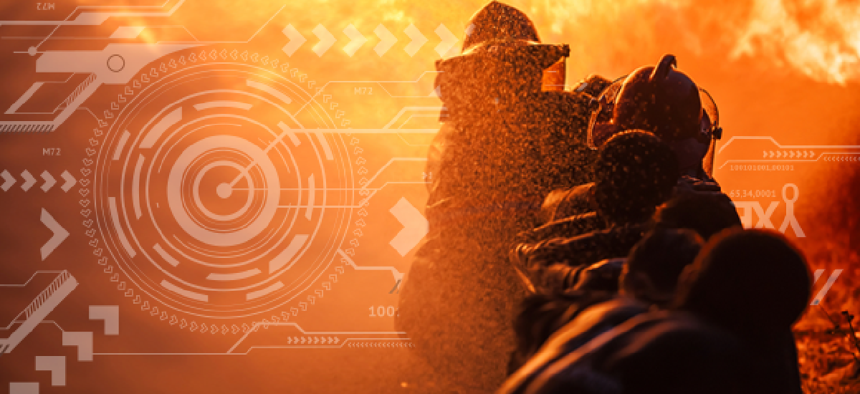App challenges light up public safety


Connecting state and local government leaders
Public and private sector organizations are turning to the developer community to deliver creative solutions to public safety challenges.
Public and private sector organizations are turning to the developer community to deliver creative solutions to public safety challenges.
*** Taking place in 10 cities, the 2019 Tech to Protect Challenge features 10 coding contests designed to develop new technologies to address issues faced by fire, law enforcement and EMS emergency responders. The 10 contests represent technical areas addressing user interface/user experience, location-based services, security, public-safety mission critical voice test equipment and public safety analytics.
The challenge is a federally funded initiative led the National Institute of Standards and Technology's Public Safety Communications Research (PSCR) Division and supported by the First Responder Network Authority and AT&T, the contractor building the FirstNet broadband wireless public-safety network.
The first round of in-person code-a-thons will take place Sept. 27-29, and the second round will be held Nov. 1-3. Developers can participate online as well. Find more information here.
*** Because responders operate in environments that sometimes severely limit their senses and ability to communicate, PSCR and FirstNet are also partnering on a Haptic Interfaces for Public Safety Challenge, which aims to spur development of haptic interface prototypes that will improve public safety operations. The challenge consists of multiple phases and requires participants to develop three haptic interface prototypes to be integrated into PSCR-provided virtual reality scenarios as well as a final haptic prototype embedded into firefighter personal protective equipment for use in search and rescue tasks. More info here.
*** The SIM Card Use for Public Safety Challenge explores the possibilities for possibilities using SIM cards as secure storage containers for public safety application credentials so responders can use their personal phones to gain seamless and secure authentication for public safety applications in emergencies. The three-phase challenge requires contestants to securely store a file on a SIM card, create a mobile application that accesses a user’s credentials stored on a SIM card and authenticate to a FIDO2 service provider. Winners will be announced Oct. 23. More information can be found here.
*** Washington, D.C.'s DCx Challenge is a two-phase, reverse-pitch competition in which participants propose proof-of-concepts that address public-safety and/or public-health challenges with gigabit- or 5G-based solutions. Three semi-finalists were selected in mid-August. One proposes an internet-of-things card that would allow the owner to trigger an emergency call with a single button press. Another aims to increase responder safety and effectiveness by fusing video analytics and sensor data for improved situational awareness. The third offers a distributed monitoring system that leverages deep learning and existing traffic camera feeds to improve bike-lane safety. The finalists will demo their solutions Oct. 2.
*** Finalists have also been chosen in IBM's Call for Code 2019 Challenge that looks to solutions to help communities mitigate the effects of natural disasters. More than 180,000 participants from 165 nations used Weather Company data and IBM Cloud, IBM Watson and IBM Blockchain services to create more than 5,000 applications to help first responders and health practitioners assist survivors of natural disasters. The five finalists are:
- Project AsTeR helps prioritize emergency response by digitizing calls from victims, analyzing them to identify key pieces of information and displaying a map prioritizing response needs based on the number of people involved and the type of injuries.
- Healios provides a mobile app platform that streamlines the process for case workers to connect with survivors who need mental health services after a disaster.
- Prometeo collects data from IoT sensors worn by firefighters to monitor their health in real time, detect trends and recommend intervention.
- Rove is an SMS chatbot that uses natural language processing to give disaster victims health information and responders a prioritized lists of those needing the most help.
- Sparrow is a conversational AI platform that enables access to medical expertise, health records and medical information during and after disasters through mobile devices, social apps, with or without internet connectivity.
The winner will be announced Oct. 12. The winning solution will be further developed and deployed via IBM Code and Response, a four-year initiative to put open-source technologies developed as part of coding challenges in the communities where they are needed most. More information on Call for Code can be found here.
Last year's winner was Project Owl, a software solution that keeps first responders and victims connected with a disaster management system and cloud software that ensure connectivity during and after an event.





